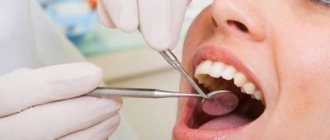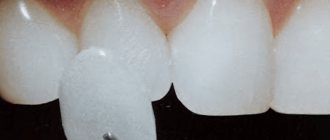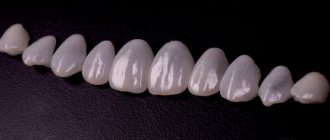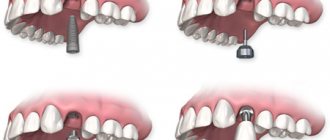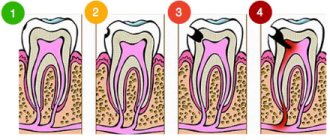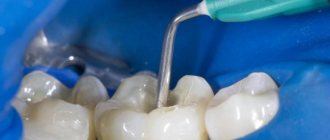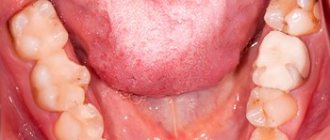Beautiful, straight teeth and a snow-white smile are a gift that nature does not bestow on everyone. Fortunately, today there are several effective techniques that can straighten teeth in childhood and provide a person with a luxurious smile for life. And the most popular way to improve their appearance is to install plates.
Today we will talk about what dental plates are, how long it will take to straighten a child’s teeth and how to choose the right smile helpers.
What are dental plates?
An orthodontic plate for teeth is a removable structure made of soft plastic and wire. This device is made individually from hypoallergenic materials and is not traumatic to the oral mucosa. Plates for straightening teeth can be either single- or double-jawed, depending on the diagnosis. They can be supplemented with a “hand-shaped process”, which is used to move only one tooth. The device may also contain a retraction arch designed to correct the position of the front teeth. Separate types of plates for teeth are Brückle and Frenkel devices. Look at the photo below to see what the plate looks like on your teeth.
What is such a device?
An orthodontic plate is a special device that corrects bite and dental defects in children. It is able to completely replace braces in children's practice. The plates are used in children from six to twelve years of age. In adults, they are used extremely rarely, as they are not able to have the necessary effect on the formed jaw. Titanium alloys and polymers are used to manufacture corrective devices.
They must meet certain parameters:
- stability of the structure, which helps maintain the previously specified shape after any deformation;
- must be durable, safe, and not provoke allergies;
- made individually for each patient.
The orthodontist decides which design will be used to correct the anomalies. It determines the position of structural elements. He decides which area of the jaw is affected to correct the bite, where fasteners are installed for comfortable removal and donning.
Types of dental plates
Depending on the diagnosis, the doctor determines the types of dental plates. In some cases, only a plate is installed for the teeth of the lower jaw. This design refers to mechanically operating devices, that is, its action depends on the elasticity of the component parts. They use the force of an orthodontic screw, wire, ligature, or rubber ring. To increase space in the dentition at the stage of mixed dentition, an expanding plate for the teeth of the upper jaw, based on a Bertoni screw, is also used. The screw is installed on the working model of the jaw in the deep part of the dome of the palate so that it is parallel to the occlusal plane. This design needs to be tightened from time to time; we will tell you how to do this a little later.
Plastic surgery for lower jaw teeth
Upper jaw plate
Types of plates
Based on the principle of purpose and structure, there are several subtypes of removable plates:
- Single jaw plates. They are used to restore the dentition in case of excessive shortening and (or) narrowing. Also used to correct deformities of individual teeth. They are a structure consisting of a plate base and screws that are tightened at the right time. Suitable for patients of all age groups.
- With retraction arch. Suitable for both jaws. They help correct the protrussin position of the dentition. The effect is achieved due to the spring properties of the arc.
- With a hand-shaped process. Attached to the upper or lower jaw. Corrects the position of individual teeth. The process, which is a distinctive part of the structure, acts on the deformed tooth, gradually moving it to the correct position.
- With active pusher. It is used to restore the frontal dentition. The effect is achieved by spring mechanisms included in the design.
- Andrez-Goipl activator. This plate consists of two parts connected to each other, put on parallel to both jaws. They target several dental defects at once.
- Bruckle's apparatus. Its action is aimed at correcting bite problems in the anterior dentition of the lower jaw.
- Frenkel apparatus. It is a structure of cheek shields, lip pads and other additional parts. They are connected by a frame into a one-piece structure that corrects mesial, distal and open bites.
When should a plate be placed on a child’s teeth?
The dental plate is not suitable for adult patients. This is an exclusively children's orthodontic device. First of all, plates for straightening teeth in children are used up to 12 years of age. During this period, there is active growth of the jaws, which makes it possible to quite effectively correct the bite, eliminate crowding and remove other occlusion anomalies. When the jaw bones have formed, it is only possible to align the teeth within the dentition. And correction of bite in adult patients is only possible with the help of braces and orthognathic surgery. In this regard, parents should not delay visiting a specialist, even if it is a preventative one, if treatment is not required. Orthodontists recommend placing a plate on a child’s teeth to achieve the following treatment goals:
- correction of jaw shape;
- regulation of jaw growth;
- correct placement of incisors in a row;
- increasing or decreasing the size of the sky.
Advantages and disadvantages of records
The advantages of fixed orthodontic braces include:
- effectiveness against malocclusions, gaps, grouping;
- relatively low cost;
- no need for active patient action (especially important for children - it is enough to follow simple operating instructions);
- the ability to save the entire row without removing the “extra”, as before braces;
- expansion of the jaw (in children), so that subsequently the permanent incisors and molars erupt correctly and do not interfere.
Before you start wearing dental plates, you should familiarize yourself with the list of potential inconveniences:
- ineffective for significant pathologies;
- the possibility of an allergic reaction to plastic or metal alloy components;
- risk of gum inflammation (in this case, consultation with the treating orthodontist is required);
- discomfort when wearing (especially initially);
- the likelihood of a change in diction (the patient will have to adapt to the new state and not plan important meetings during the adaptation period);
- lack of aesthetic appeal (it is better to find out in advance everything about the condition of the teeth and clarify what a dental plate looks like for a child or adult).
How effective are the devices?
If the problem is not advanced, arches are enough to get an even, beautiful smile and get rid of defects. Only an orthodontist can give the most accurate forecast - he will also advise which device should be chosen.
The best option is to use the design at a young age, as this reduces the likelihood that repeated correction will be needed after adulthood. The doctor will select the optimal wire thickness to achieve the effect.
How to place a plate on a child’s teeth?
Installing plates on children's teeth usually takes several weeks, since they are made individually for each patient. To create a suitable orthodontic appliance, the patient undergoes an X-ray examination, then the doctor takes an impression of the teeth for the plate. After this, plaster models are made, from which the structures are created. Particular attention is paid to the exact match of the surface relief of the gums and the palate - the adjustment takes just over 10 minutes. After this, the child will be able to independently remove and put on the plate on the lower teeth and upper jaw.
What does a deep bite look like?
A deep bite is one of the most common types of improper closure of teeth, in which the upper teeth overlap the lower teeth by more than 1/3 of the crown.
This fairly common anomaly has several stages. The initial stage, when the lower teeth come into contact with the palatal tubercle of the upper ones, is called deep incisal overlapping. It is the least dangerous and does not affect the patient’s health until a certain time. The phrase “deep bite” refers to the second phase, in which there is practically no contact between the teeth of both jaws or it occurs only at the very base of the upper incisors. The very last stage is considered difficult to treat and very invasive, hence its name - deep traumatic bite. At this stage, the lower teeth are constantly in contact with the soft tissues of the upper jaw, causing inflammation.
Important!
If the anomaly is not eliminated in time, sooner or later it will move to the next stage and require more serious treatment of a deep bite.
Correction of deep bite
How long do you wear plates on your teeth and how to wear them?
The main problem with this type of treatment is that children need to wear removable dental plates 22–23 hours a day. The course of treatment can last from a year to a year and a half, with replacement of the structure required every 6 to 8 months. Like any orthodontic device, plates for baby teeth require some getting used to. Children often complain that their teeth hurt from the plate; this is normal. Usually the discomfort disappears 5 to 6 days after installation.
Wearing dental plates often confuses children, but it is worth explaining to the child that they are less noticeable and more comfortable than metal braces, which will have to be worn in adolescence without timely treatment. Children's dental plates are often made of plastic in bright colors so that the child enjoys wearing them.
How to fix a deep bite?
So, how can you correct a deep bite when it’s too late to think about prevention? The choice of treatment for deep occlusion depends on the type of anomaly and the age of the patient. So, for very young children, as we have already said, it is necessary, first of all, to normalize breathing, as well as restore missing and damaged teeth - and then after some time they will begin to close correctly.
At a more mature age, at approximately 5 - 11 years, deep bite treatment is carried out using a plate with a bite pad. It increases the load on the lower front teeth, as a result of which they become smaller, and the lateral ones, on the contrary, become longer, which leads to normalization of occlusion.
How to tighten a dental plate?
The twisting procedure is necessary to increase the load, as well as expand the main surface of the plate, which is installed on the upper jaw. Your doctor will tell you how to tighten the dental plate and how often to do it. The process itself is not too complicated: using a key inserted into the main hole of the screw, one turn is made along the guide arrow on the tooth plate. After this, the child may feel discomfort for some time, but this procedure is necessary to achieve the desired result. In addition, if necessary, the plate can be returned to its previous position by turning back.
Dental plastic with a key for twisting
Why do children need to correct their bite?
Signs of malocclusion or uneven teeth make parents think about what measures to take to improve the situation. However, there is an opinion that there is no need to rush, since most problems with bite will level out on their own as the baby grows. They think about it only if the violations are gross and disfigure their appearance. Even a minor defect in a child only gets worse as he grows, leading to health problems.
Malocclusions lead to the development of the following diseases:
- premature destruction of teeth;
- diseases of the digestive tract due to disruption of the process of chewing food;
- dysfunction of the jaw joint;
- development of skeletal defects in the facial part;
- pathologies of ENT organs;
- disturbances in posture and gait;
- pathological abrasion of teeth;
- formation of psychological complexes;
- headache.
The sooner parents think about correcting defects in bite and dentition, the easier and cheaper it is to correct even serious anomalies.
How to care for a dental plate?
When wearing a removable structure, the child needs to handle it carefully and avoid damage or loss, as well as properly care for it. You need to remove the plate from your teeth before each meal and be sure to clean it every day with a special brush and gel. It is better to store records in a container. Particular attention must be paid to the little patient’s own oral hygiene. That is why dentists usually give a short lecture to the child, in which they explain all the rules for handling this structure.
Container for dental plates
How to use the device
The device for straightening the teeth is worn from six months to three years. This depends on the severity of the pathology of the dental system. It is prescribed to be worn up to twenty-two per day. It is allowed to remove before eating, caring for the oral cavity and the plate. It is cleaned with a toothbrush and then washed with water. A paste without abrasives is used. The device is easily installed on the child’s jaw and does not require special skills. It needs to be tightened regularly, as the orthodontist explains and demonstrates to parents how to do this. They are given individually in each individual case. Store the plate when not in use in a special case.
Plates or braces for teeth?
This choice cannot stand - dental plates and braces have different functions. The former affect the entire dentition, the latter have a wide range of functions and solve various orthodontic problems: from the curvature of individual teeth to malocclusion and crowding. Also, the plate cannot be placed if the child has developed traumatic periodontitis, in which a fracture of the cortical plate of the tooth is possible. However, these two devices can be used in combination - first the child will be given a plate, and then braces.
Manufacturing and installation
Each of the plates is made exclusively to individual order, based on the specific structure of the dentition of each individual patient. To do this, the specialist makes an impression, which will become the basis for the manufacture of the structure. The patient may first be prescribed a dental x-ray, which will reveal any hidden damage that could also affect the general condition of the jaw.
When the cast is ready, it takes a little time to make a preliminary layout. Next, the patient is given an appointment to try it on. If the design is suitable and the person feels comfortable with it, a real plate is made for him.
The structure is put on the dentition directly at the doctor’s appointment so that the specialist can set the optimal pressure level using a screw. Next, you need to visit a doctor at least once a month to correct the pressure on the dentition.
The cost of a dental plate in Moscow
The average cost of dental plates for children in Moscow varies from 8 to 15 thousand rubles. Do not forget that the design requires periodic correction and replacement, so visits to the doctor must be included in the total cost. You should also take into account other factors that affect the price, for example, the level of pediatric dentistry and the qualifications of specialists. In any case, you shouldn’t go after cheapness; the cost of dental plates for children should not be too low - the child’s health is more expensive.
At what age can you wear it?
The most optimal age when an orthodontist can prescribe wearing plates is about 5–6 years. This age can be extended to 10–12 years. 5 years is the recommended, but not always the limit norm. Despite the fact that children's dentition has not yet been formed, anomalies in its development may appear earlier.
If there is a special need, the dentist can recommend one of the gentle plate options before the age of five – at 3–4 years. Here everything depends on the expected result - how great the benefit from the orthodontic apparatus will be.
How to relieve pain - recommendations from dentists
Experts from the “Smile” dental network, based on their practical experience, advise:
- Before going to the procedure for installing braces, you need to get a good night's sleep, have a hearty snack in advance, and not worry. If you still have anxiety, you can take a light sedative;
- when wearing a brace system at the initial stage, in order to minimize friction of the lips and tongue on the structural elements, it is recommended to use specialized wax for braces;
- to eliminate pain while eating, foods should be cut finely and not eat hard foods;
- If pain interferes with your normal routine, you can take painkillers. But their use should not be constant.
Important:
sensations at all stages of treatment are purely individual. Therefore, only an orthodontist can give correct advice based on a specific clinical situation.
What results can be achieved?
Sometimes the use of plates in childhood precedes the subsequent installation of braces. However, in most cases, with the help of such orthodontic appliances, it is possible to avoid treatment with fixed structures or make it shorter.
The sooner you start correcting your bite, while the dentition is easily corrected, the greater the likelihood of a complete recovery.
In adults, the result, at first glance, is less noticeable. Especially when the plates are used as retainers, holding teeth in the correct position after removing the braces. However, these structures prevent repeated changes in the bite and allow a person to live a full life .
Is it painful to wear?
Patients do not experience severe pain even during the adaptation period - for several days while they get used to the orthodontic apparatus. However, many may experience quite severe discomfort. In this case, discomfort is almost always associated with the presence of a foreign solid object in the mouth.
Basically, all unpleasant sensations go away in a maximum of a week and a half. However, in cases where wearing is not indicated constantly, but only for a certain number of hours during the day, addiction can extend over a longer period.
